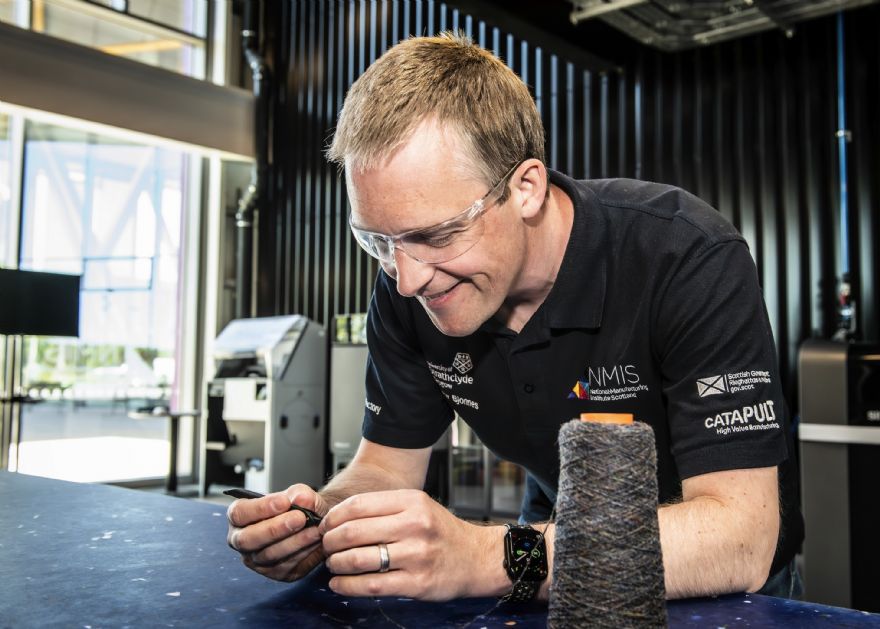 Andrew Bjonnes, senior research and development engineer (AM) at NMIS with the new loom assembly
Andrew Bjonnes, senior research and development engineer (AM) at NMIS with the new loom assemblyA world-renowned Scottish textile brand,
Harris Tweed is using industrial 3-D printing technology to help keep its traditional weaving machines running and so help future-proof the craft for years to come. By law, Harris Tweed can only be handwoven in the homes of weavers in the Outer Hebrides, but the complex design of the looms means replacement components can take up to six months to source, often forcing weavers to borrow parts from fellow artisans or modify their looms themselves to keep them running.
This predicament has seen the Harris Tweed Loom Spares Co partner with the
National Manufacturing Institute Scotland (NMIS) — operated by the
University of Strathclyde and part of the
High Value Manufacturing (HVM) Catapult — to create a new design of loom assembly that incorporates 3-D printed parts and improves accessibility.
Engineers at NMIS’s Digital Factory in Renfrewshire tested a range of materials to produce durable, high-quality loom components. In one application, a key assembly previously comprising seven individual parts was redesigned to be replaced by three additively manufactured components using a strong composite material. Moreover, the new 3-D printed version costs 99% less than the original; and, using a low-cost desktop machine it can be produced locally in as little as 2hr.
IngenuityWeavers have long been known for their ingenuity in keeping their looms running. John Bennie, for example, went so far as to modify his loom by re-purposing the flywheel from a Ford Ka and attaching it to his loom to improve its performance.
He said: “When a vital part of the loom breaks, it can halt production for weeks, which is incredibly frustrating. Finding a way to keep the loom running smoothly is essential, and it’s been great to be one of the first to try out the new 3-D printed assembly. The ability to get what we need, when we need it, will make a huge difference, minimising downtime and allowing us to focus on our work without unnecessary interruptions.”
Kelly McDonald, operations manager at the
Harris Tweed Authority, said: “We take pride in our craftsmanship and tradition, but we know that innovation is vital for keeping our industry strong for the generations to come. Working with NMIS is a significant step forward in future-proofing the looms critical to the production of Harris Tweed.
“With the ability to replace parts quickly, easily, and affordably, our weavers can focus on what they do best without worrying about delays. This not only safeguards the future of our fabric but also supports the livelihoods of the island community who dedicate their skills to preserving the craft.”